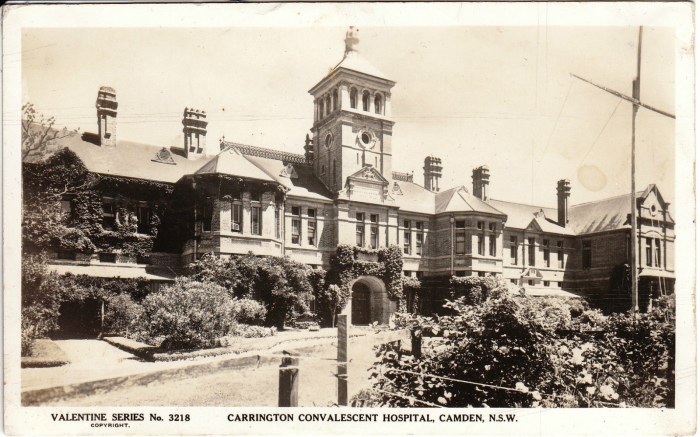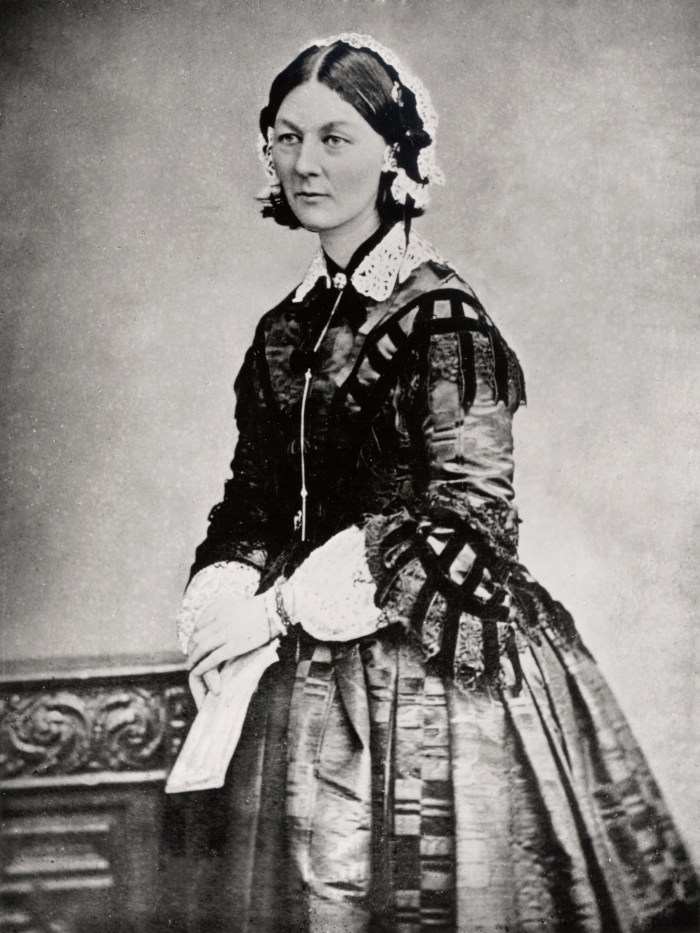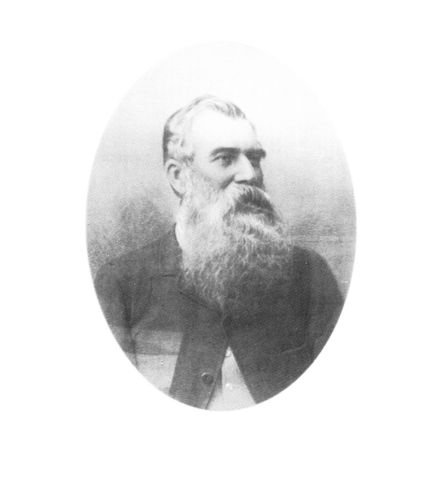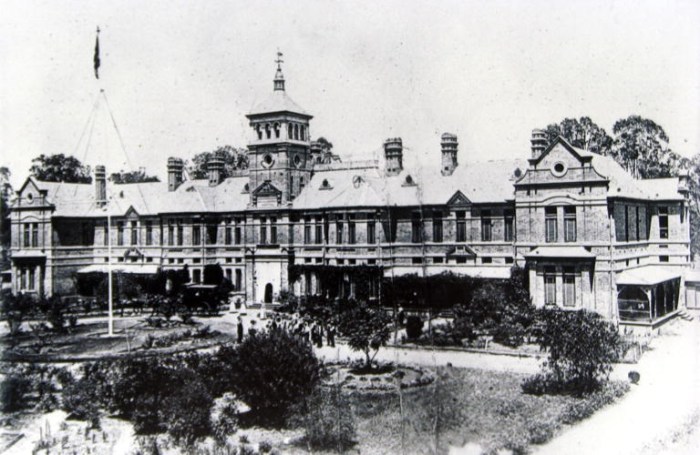A convalescent hospital follows Florence Nightingale’s principles
Fresh air was the order of the day for patients at the newly opened Carrington Centennial Hospital for Convalescents and Incurables at Camden in 1890.
Fresh air was the order of the day for patients at the newly opened Carrington Centennial Hospital for Convalescents and Incurables at Camden in 1890. The hospital followed the latest methods in medical practice and building architecture from Victorian England based on the writings and approach advocated by Florence Nightingale.
Victorian England hospitals
By the late 19th century, Victorian England had over 300 Convalescent hospitals. They were one of a variety of specialist hospitals in Victorian England. They included consumptive hospitals, fever hospitals, ophthalmic hospitals, lying-in hospitals, venereal disease hospitals, orthopaedic hospitals, lunatic asylums, fistula infirmaries, invalid asylums, as well as those catering to different groups of people, for instance, seamen’s hospitals, German hospital, children’s hospitals and others.
British historian Eli Anders states that in England, convalescent homes were built at the seaside or in the countryside, away from the dirty, polluted cities. They would be places of rest, nourishment and recuperation with plenty of fresh and healthy air. Medical practices dictated that fresh air and exercise were the order of the day.
Camden’s fresh country air
The location of Carrington fitted this model. It was in the picturesque countryside with views over the Nepean River floodplain on a hill to catch fresh country air. Camden was considered a healthy site away from the pollution and evils of industrial Sydney and the increased public health risks of the urban environment and sanitation issues.
Florence Nightingale
Carrington Hospital was New South Wales’s first central convalescent facility, following design principles espoused by Florence Nightingale. Historian Eli Anders states that Nightingale wrote in her Notes on Nursing and Hospitals that she advocated for ventilation and proper site selection. She promoted the ‘healthfulness’ of convalescent hospitals in the countryside and on the edge of towns where they took advantage of fresh country air. Similar advantages could be achieved by a seaside location.
Miasma
At the heart of this idea was the miasma theory, which stated that diseases such as cholera, chlamydia or Black Death were caused by ‘bad air’. The theory stated that epidemics were due to a miasma that started from rotting organic matter. The theory originated from the ancients in places like China, India and Europe and was only displaced by germ theory in the 1880s, which stated that germs caused diseases. Despite this, popular culture retained a belief in ‘bad air’ and stated the urban areas had to clean up waste and eliminate bad odours. These ideas encouraged Florence Nightingale’s activities in the Crimean War, where she worked to make hospitals sanitary and fresh smelling. These ideas also significantly influenced Sydney and the Black Death (bubonic plague) outbreak in 1900 after the urban renewal process that followed in suburbs like The Rocks and Millers Point.
WH Paling
Convalescent homes were often built by philanthropists and charitable organisations. Carrington Hospital was built by Sydney philanthropist and businessman WH Paling (1825-1895), who immigrated with his family to Sydney in 1853. Paling ran a music business importing pianofortes and sheet music and was an entertainment promotor and composer during the heyday of the gold rushes. His business success allowed him to pursue his political and philanthropic interests. Paling was an alderman on Petersham Municipal Council and mayor, a member of the Royal Society and a Mercantile Mutual Insurance Company director. The Australian Dictionary of Biography states
His far-sighted preoccupation with questions of sanitation, health and hospital accommodation culminated in his presentation to the colony on 23 April 1888 of his 450-acre (182 ha) model farm Grasmere at Camden, valued at £20,000, to be used as a hospital for convalescents and incurables; he also donated £10,000 for the erection of suitable buildings. A public committee led by Sir Henry Parkes raised a further £15,000 for equipment and development at the Carrington Convalescent Hospital on the site.
The hospital site was purchased in 1881 from Camden Park by a syndicate of WH Paling, AH McCullock, Benjamin James Jnr and W Stimson, containing 5100 acres. It was part of the North Cawdor Farms sale, including several Camden Town blocks. The sale had several conditions and was not finalised until 1888. In the meantime, Paling developed his Grasmere Estate farms. He established a Deed of Gift in 1888 with Lord Carrington as president of the hospital, chair of the general committees, and himself as vice president.
The hospital was named after Lord Carrington, Governor of New South Wales (1885-1890), who served from the centenary of the colony’s foundation.
Late Victorian Queen Anne Revival
The 89-bed hospital (49 male, 40 female) was designed by Sydney architect HC Kent and constructed by building contractor P Graham. The NSW State Heritage Inventory states:
It is representative of a late Victorian institutional building and is also representative of hospital building techniques (including setting) of the time. Main building of late Victorian eclectic style is brick on concrete foundations with cement dressings in the super structure and tower.
The main building is an excellent example of a Late Victorian Queen Anne Revival style. There were also additional buildings, including a gardeners cottage, Masonic cottage, morgue, and Grassmere Cottage. There were extensive landscape gardens in a general Victorian layout with a carriage loop and flower bed.
In England, convalescent facilities were excellent and were better than home life conditions for many poor people. The idea with the convalescent hospital was that the patients spent weeks recovering away from their homes. Rich people who hired their own doctors to treat them during illness or convalescence. They paid to recuperate in a seaside health resort or travel to a spa centre. Convalescent homes were seen as superior to hospitals because they differed from dreary wards. Supporters advocated their calming and home-like qualities with libraries, games, and sitting rooms.
Ventilation and fresh air
The Illustrated Sydney News stated that the Carrington Hospital is located on a hill overlooking Camden to take advantage of ‘fresh air’ with ‘ventilation in the sleeping and living rooms’. The ventilation in the buildings was planned by Sir Alfred Roberts and based on Prince Alfred Hospital. The convalescence patients can ‘sit outside and enjoy the lovely view and balmy health-giving air’. The garden had ‘comfortable shady seats, where patients can wander about and rest at will, is of great importance, as well as the verandahs where they can exercise in wet weather, and the large sitting or day rooms’. There is the pleasant ‘park-like appearance’ of the countryside around Camden which ‘is very English in its character’. Patients will be able to recuperate for ‘two or three weeks’ rest and proper food, which would mean so very much to them just at this stage…They are free to revel in the country scenes and sounds and rest awhile from life’s bustle.
The Sydney Press stated that the aims of the hospital
are, that persons recovering from acute illness may benefit by a short residence in the healthful climate of Camden, and a plentiful use of the farm products from the estate ; and further, that persons suffering from incurable diseases may have their lives prolonged and their sufferings alleviated by the above-named advantages. (Illust Syd News)
Lord Carrington lays the foundation stone
The Governor of New South Wales, Lord Carrington, laid a foundation stone in February 1889 in front of a crowd of over 2000 people. A special train from Redfern was met at Camden Railway Station by well over 1000 people. The Maitland Mercury and Hunter River Gazette reported that Camden Station was ‘gaily decorated’ with a string of flags. Lord Carrington arrived by train from Moss Vale and he was met at the home by Sydney signatories who were members of the management committee and trustees. The report noted that hot and cold running water would be laid on throughout the building.
Carrington Convalescent Hospital opened on 20 August 1890 and the first matron was Miss McGahey, who resigned in 1891 to take a position as matron at Prince Alfred Hospital in Sydney. She was followed by Matron Kerr, then Matron Blanche Bricknell in 1897, who served until 1907.
Annual reports
The 1898 7th annual report in the Camden News stated that the hospital had treated 1153 in the previous 12 months, with the annual cost of each bed being £35/8/9d. The meeting discussed the reluctance of patients to contribute to the cost of their stay. During the year, Sister Elenita Williams was succeeded by Sister Edith Carpendale. Nurses Bertha Davidson and Eva Thomson were succeeded by Nurses Lily BanfieId and Theresa Richardson. Subscribers elected Mr JR Fairfax and Major JW Macarthur Onslow to the management committee.
The 1900 annual report in the Camden News stated that the hospital had treated 1040 patients the previous year, with the average number of patients being 75. The average patient stay was 28 days and cost £2/10/11d. The hospital shut its emergency section when the Camden Cottage Hospital opened during the year and Camden medical officers acted in an honorary capacity.
First major convalescent hospital
Carrington Hospital was the first major convalescent hospital in New South Wales and its surrounding buildings and gardens are listed on the Camden Local Environment Plan Heritage Inventory (Item 118). Carrington Hospital is significant in that it is, along with Thomas Walker Convalescent Hospital, one of only two remaining functional purpose-built late 19th-century convalescent hospitals in New South Wales.
Read more
Read more on types of hospital in Victorian London
Read more on Eli Anders, Locating Convalescence in Victorian England
Read more on William H Paling (ADB)
Read more on the State Heritage Inventory entry for Carrington Hospital
Read more on the Carrington Hospital in the Illustrated Sydney News 24 May 1890
Noel Bell Ridley Smith, Carrington Nursing Home, Heritage Curtilage Assessment, McMahon’s Point, 2006. Online at Pt 1 and Pt 2
Noel Bell Ridley Smith, Carrington Nursing Home Conservation Management Strategy, McMahon’s Point, 2006.
Carrington Hospital 7th Annual Report Camden News 3 March 1898.
Carrington Hospital 9th Annual Report Camden News 28 June 1900
Updated 27 April 2023. Originally posted on 25 January 2018.









I love the concept of a hospital for Incurables. An interesting blog on part of Sydney’s history about which I know so little, despite living here.